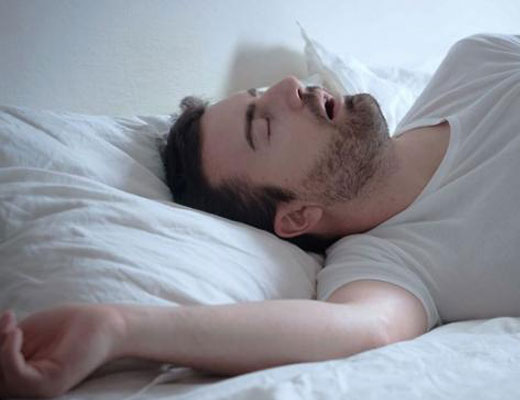Sleep Apnea Treatment

What Is Sleep Apnea?
Sleep apnea in Ballston Spa, NY is a disorder that causes a person to stop breathing while they are asleep. This condition can result in serious health complications (or worse) if not treated and managed properly.
There are a variety of sleep apnea treatment options available.
Five Common Sleep Apnea Treatments
1. Oral Appliances
Obstructive sleep apnea occurs when the soft tissue in your neck and head press down on your windpipe. There are special oral appliances called mouthpieces that are designed to adjust the lower jaw and keep your tongue in place, so they don’t press on your windpipe.
2. Breathing Devices
- CPAP (continuous positive airway pressure)
A CPAP machine is a widely used option for treating sleep apnea. It’s designed to push a steady flow of air pressure into your throat to keep your airway open when you breathe in.
- APAP (automatic positive airway pressure)
If you have problems with using a CPAP machine, your doctor might recommend trying an APAP machine. This machine props open your airways while you sleep so nothing blocks it. An APAP machine is different from a CPAP because this one adjusts how much pressure it gives to you while you are sleeping.
- BiPAP (bilevel positive airway pressure)
The BiPAP is like a CPAP except the airflow changes as you breathe in and out. It works by using pressure to put air into your lungs. So when you breathe normally, it will push your diaphragm down. This machine is most commonly used by people who have COPD. However, you will have to talk with your doctor before going this route because it’s not right for everyone.
3. Non-Medical Sleep Apnea Treatments
Non-medical sleep apnea treatments in Ballston Spa, NY work to improve or get rid of the problem. These are not a cure; however, non-medical treatments can sometimes help reduce your sleep apnea or prevent it from happening altogether.
- Weight Loss – losing just 10% of your body weight can significantly improve your sleep apnea.
- Nasal Sprays – these will help improve sleep apnea in some people.
- Adhesive Strips – over-the-counter products like nasal strips can make it easier for air to flow through your nose, which can help with mild sleep apnea and will sometimes reduce snoring as well.
4. Nerve Stimulators
A nerve stimulator is attached to the nerve that controls your tongue’s movements. This works by stimulating that nerve by pushing your tongue forward while breathing when you’re asleep.
This process involves implanting a device under the skin on your chest. You turn the stimulator on before you go to sleep and turn it off when you wake up.
5. Sleep Apnea Surgery
If other sleep apnea treatments aren’t working for you or if you have any conditions that narrow your throat, you might need surgery. There are several types of sleep apnea surgery available.
- Somnoplasty – this uses radiofrequency to reduce the soft tissue around the upper portion of your windpipe.
- Nasal Surgery – this will fix nasal problems that cause sleep apnea.
- Tonsillectomy/Adenoidectomy – these will remove your tonsils and adenoids to widen the area where your mouth, throat, and nasal passages intersect. This makes your throat wider so the air can pass through more easily.
- UPPP (uvulopalatopharyngoplasty) – This removes the soft tissues from the back of your palate and throat which will make your throat wider at the opening so you can breathe.
- Maxillary or Jaw Surgery – this is a surgery that will slightly change the position of your jaw, so the soft tissue won’t press on the back of your airway so easily.
Integrative Sleep Center specializes in helping people with sleep apnea get back to living better lives.


